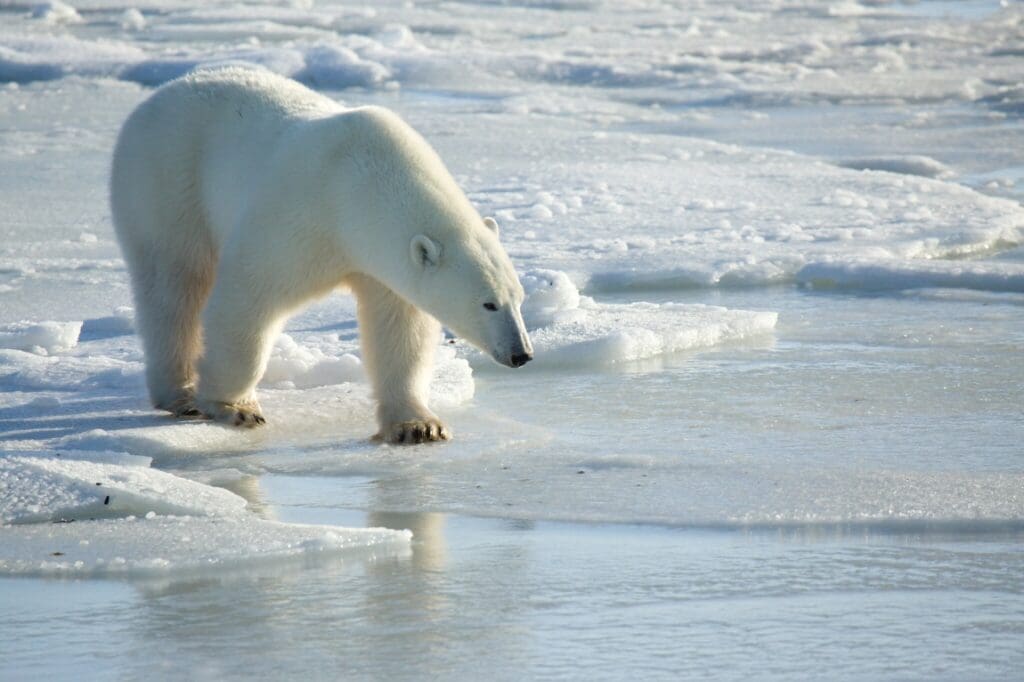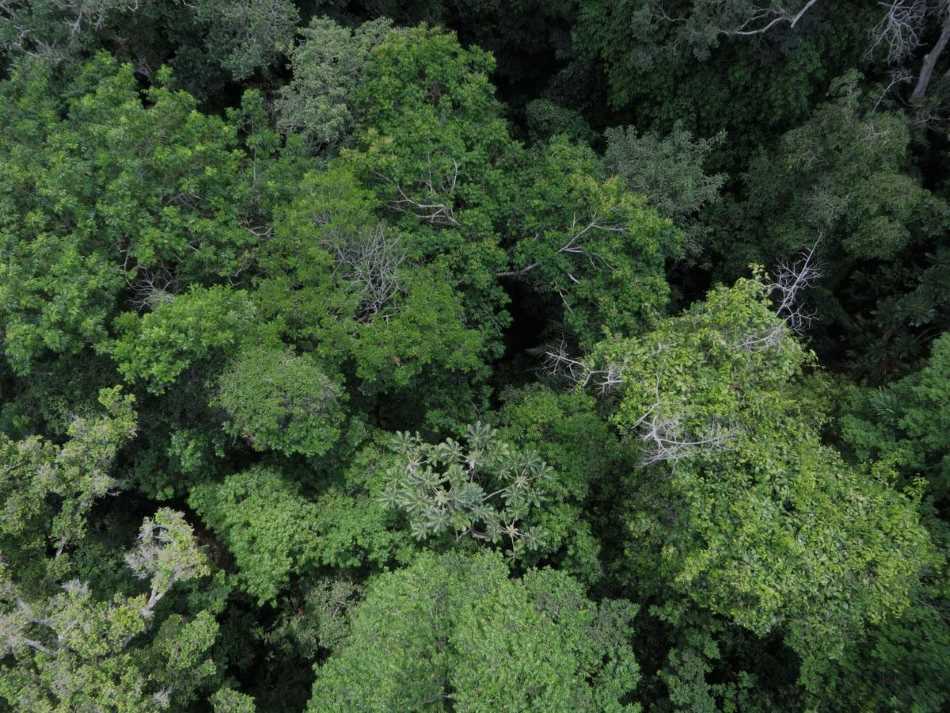Intensified greenhouse gas prediction: Configuring Gate with Fine-Tuning Shifts with Bi-LSTM and GRU System
On a global scale, climate change refers to persistent alterations in weather conditions and temperature patterns. These modifications have far-reaching implications across the world.
GHGs (Greenhouse Gases) play a crucial role in driving climate change. Most of these emissions originate from human activities, particularly those contributing to releasing CO2 and CH4. In the conventional approach, identifying emissions involves recognizing and quantifying the sources and amounts of GHG released into the atmosphere.
However, this manual identification method has limitations, including being time-consuming, relying on incomplete resources, prone to human error, and lacking scalability and coverage. – Frontiers in Climate
Journal Reference:
Mohemmed Sha, Sam Emmanuel, A. Bindhu, Mohamed Mustaq, ‘Intensified greenhouse gas prediction: Configuring Gate with Fine-Tuning Shifts with Bi-LSTM and GRU System’, Frontiers in Climate 6 (2024). DOI: 10.3389/fclim.2024.1457441
Carbon dioxide capture from open air using covalent organic frameworks
Scientists have made significant progress in addressing one of the most pressing challenges of climate change: capturing carbon dioxide (CO2) from the air. A new study introduces a porous, crystalline material that can efficiently capture CO2 directly from open air, potentially advancing carbon neutrality efforts.
The material, named COF-999, belongs to a class of substances called covalent organic frameworks (COFs). COFs are known for their structural flexibility and high porosity, which makes them ideal candidates for gas storage and separation. What sets COF-999 apart is its post-synthetic modification—polyamines are introduced into the framework’s pores, enhancing the material’s ability to capture CO2 even in complex and changing atmospheric conditions.
When tested, COF-999 demonstrated a high capacity for CO2 capture, with the ability to absorb 0.96 millimoles per gram in dry air, and even more—2.05 millimoles per gram—at 50% relative humidity. This capacity is notable given the typical CO2 concentration of 400 parts per million in the air. Moreover, COF-999 showed exceptional durability, retaining its performance over 100 adsorption-desorption cycles under real-world conditions in Berkeley, California.
The material’s ability to reach half its CO2 absorption capacity in just 18.8 minutes, combined with a relatively low regeneration temperature of 60°C, makes it a highly efficient tool for air-based CO2 capture. – MUSER PRESS
Journal Reference:
Zhou, Z., Ma, T., Zhang, H. et al. ‘Carbon dioxide capture from open air using covalent organic frameworks’, Nature (2024). DOI: 10.1038/s41586-024-08080-x
Integrating climate change into state hazard mitigation plans: A five-year follow-up survey of state hazard mitigation officers
Climate change is making disaster events more frequent and intense, increasing the risk to economic security, ecosystem health, and human health and well-being.
Hazard mitigation planning, overseen in the United States by the Federal Emergency Management Agency (FEMA), aims to reduce disaster risk by identifying hazards and taking action to reduce their impact. While FEMA policy requires states and territories to consider the risks of climate change in their plans, guidance remains broad.
As a result, jurisdictions have taken different approaches to integrating climate change into their hazard mitigation plans (HMPs). Thirty of 56 U.S. State and Territorial Hazard Mitigation Officers (SHMOs) responded to a survey concerning climate planning, building on a similar survey conducted in 2018. A majority of respondents recognized that their jurisdictions are vulnerable to climate change and agreed that climate change is a threat to their jurisdictions both now and in the future. Respondents were motivated to integrate climate change into their HMPs by factors including increased evidence for climate change projections and disaster events in either their jurisdictions or neighboring ones.
Among the most frequently reported barriers was reliance on historical patterns of hazard exposure. Most respondents had incorporated at least one climate change adaptation strategy into their HMPs but reported having insufficient resources to plan for and implement climate-related hazard mitigation activities. Findings suggest that state and territorial hazard mitigation planning programs are taking more steps to integrate climate change into their plans and that SHMOs are more aware of the risks that climate change poses than in 2018.
Further research is needed to explore how best to support state-level hazard mitigation program response to climate change. – PLOS CLimate
Journal Reference:
Mix EC, Hamele M, Dannenberg AL, Freitag R, Errett NA, ‘Integrating climate change into state hazard mitigation plans: A five-year follow-up survey of state hazard mitigation officers’, PLOS Climate 3(10): e0000385 (2024). DOI: 10.1371/journal.pclm.0000385
Analysis of current and future bioclimatic suitability for C. arabica production in Ethiopia
The coffee sector in Ethiopia is the livelihood of more than 20% of the population and accounts more than 25% of the country’s foreign exchange earnings.
Climate change is expected to affect the climatic suitability of coffee in Ethiopia, and this would have implications for global coffee output, the national economy, and farmers’ livelihoods in Ethiopia. The objective of this paper is to assess the current and future impacts of climate change on bioclimatic suitability to C.arbica production in Ethiopia. Based on the current distribution of coffee production areas and climate change predictions from HadGEM2 and CCSM2 models and using the Maximum Entropy (MaxEnt) bioclimatic modeling approach, future changes in climatic suitability for C. arabica were predicted.
Coffee production sites in Ethiopia were geo-referenced and used as input in the MAXENT model. The findings indicated that climate change will increase the suitable growing area for coffee by about 44.2% and 30.37% under HadGEM2 and CCSM2 models, respectively, by 2080 in Ethiopia. The study also revealed a westward and northwestward shift in the climatic suitability to C. arabica production in Ethiopia. This indicates that the suitability of some areas will continue with some adaptation practice, whilst others currently suitable will be unsuitable, yet others that are unsuitable will be suitable for arabica coffee production.
These findings are intended to support stakeholders in the coffee sector in developing strategies for reducing the vulnerability of coffee production to climate change. Site-specific strategies should be developed to build a more climate resilient coffee livelihood in the changing climate. – PLOS ONE
Journal Reference:
Adane A, ‘Analysis of current and future bioclimatic suitability for C. arabica production in Ethiopia’, PLoS ONE 19(10): e0310945 (2024). DOI: 10.1371/journal.pone.0310945
Informing climate-health adaptation options through mapping the needs and potential for integrated climate-driven early warning forecasting systems in South Asia – A scoping review
Climate change is widely recognised to threaten human health, wellbeing and livelihoods, including through its effects on the emergence, spread and burdens of climate–and water-sensitive infectious diseases. However, the scale and mechanisms of the impacts are uncertain and it is unclear whether existing forecasting capacities will foster successful local-level adaptation planning, particularly in climate vulnerable regions in developing countries.
The purpose of this scoping review was to characterise and map priority climate- and water-sensitive diseases, map existing forecasting and surveillance systems in climate and health sectors and scope out the needs and potential to develop integrated climate-driven early warning forecasting systems for long-term adaptation planning and interventions in the south Asia region.
We found very few robust, evidenced-based forecasting systems for climate- and water- sensitive infectious diseases, which suggests limited operationalisation of decision-support tools that could inform actions to reduce disease burdens in the region. Many of the information systems platforms identified focussed on climate-sensitive vector-borne disease systems, with limited tools for water-sensitive diseases.
This reveals an opportunity to develop tools for these neglected disease groups. Of the 34 operational platforms identified across the focal countries, only 13 (representing 38.2%) are freely available online and all were developed and implemented by the human health sector. Tools are needed for other south Asian countries (Afghanistan, Sri Lanka, Bhutan) where the risks of infectious diseases are predicted to increase substantially due to climate change, drought and shifts in human demography and use of ecosystems.
Altogether, the findings highlight clear opportunities to invest in the co-development and implementation of contextually relevant climate-driven early warning tools and research priorities for disease control and adaptation planning. – PLOS ONE
Journal Reference:
Asaaga FA, Tomude ES, Rickards NJ, Hassall R, Sarkar S, Purse BV, ‘Informing climate-health adaptation options through mapping the needs and potential for integrated climate-driven early warning forecasting systems in South Asia – A scoping review’, PLoS ONE 19(10): e0309757 (2024). DOI: 10.1371/journal.pone.0309757
Measuring the climate security nexus: The Integrated Climate Security Framework
International, regional, and national organizations, alongside policymakers, are increasingly acknowledging the crucial connection between climate, peace, and security. However, there remains a notable gap in research methodologies capable of fully grasping the intricate dynamics of this relationship.
This paper introduces the Integrated Climate Security Framework (ICSF), a comprehensive mixed-methods approach designed to unravel the complexities of climate-human security-conflict connections across various scales. By integrating traditional and innovative research methods, the ICSF aims to provide cutting-edge, policy-relevant insights to address five main measurement challenges of the climate security nexus: multiple pathways; context specificity; non-linearity; multiple actors and scales, and multiple geographic and time scales.
By drawing on diverse epistemological perspectives and engaging directly with local communities, the framework offers a comprehensive evaluation of the complex social-ecological dynamics at play. Using Kenya as a case study—a country where climate and security risks frequently intersect and amplify each other—we demonstrate the comprehensive insights the framework offers to address the complex challenges at the nexus of climate, human security, and conflict. – PLOS Climate
Journal Reference:
Pacillo G, Medina L, Liebig T, Carneiro B, Schapendonk F, Craparo A, et al. ‘Measuring the climate security nexus: The Integrated Climate Security Framework’, PLOS Climate 3(10): e0000280 (2024). DOI: 10.1371/journal.pclm.0000280
Exploring novel North Water Polynya ecosystems under climate change
Climate change is rapidly reshaping species distributions in the Arctic, which could profoundly impact ecosystem structure and function. While considerable effort has focused on projecting future species distributions, assessing the impacts of range-shifting species on recipient communities and subsequent disruptions to food webs remains largely unstudied.
Here, we address this gap by combining species distribution models and ecosystem models to explore the emergence of novel ecosystems in the North Water Polynya. The North Water Polynya is an open-water area between Greenland and Canada, surrounded by sea ice and one of the world’s most productive ocean ecosystems.
Using existing literature and projections from species distribution models of four marine species, we develop six plausible future ecosystem scenarios for the North Water Polynya. These scenarios include changing biomass of primary producers, changing biomass and size structure of copepods, shifting abundances of forage fish species, and the establishment of killer whales. We find that the biomass of higher trophic levels show pronounced decreases in response to the decrease in pelagic primary producers, with polar bear biomass halving compared to present conditions. Changes in the copepod size structure has the largest impact on the entire ecosystem compared to the other novel ecosystem scenarios, suggesting a strong reliance of higher trophic levels on large, lipid-rich copepods.
We further show that increasing capelin with a simultaneous decrease in Arctic cod biomass causes large decreases in the biomass of marine mammals such as polar bear, beluga and ringed seal. Finally, we show the establishment of killer whales as a key novel predator could have cascading top-down effects on the North Water Polynya ecosystem. The framework presented here provides an approach for exploring the emergence of novel ecosystems and highlights how climate change could disrupt a high Arctic ecosystem. – PLOS Climate
Journal Reference:
Gillie ER, Bryndum-Buchholz A, Willis SG, Eddy TD, ‘Exploring novel North Water Polynya ecosystems under climate change’, PLOS Climate 3(10): e0000490 (2024). DOI: 10.1371/journal.pclm.0000490
Carbon emissions and low-carbon innovation in firms
Most of the previous studies of environmental innovation focus on the impact of environmental innovation on carbon emissions. This study rarely examines the internal causes and mechanisms of influence of low-carbon innovation.
This study focuses on the effect of carbon emissions on low-carbon innovation in firms. Using a panel data set of Chinese A-share firms, this study finds that the increase in carbon emissions promotes low-carbon innovation. This promoting effect comes from high carbon emissions increasing the pressure to reduce carbon emissions in firms and prompting firms to increase R&D investment, and the effect is more pronounced in firms with lower equity concentration or high-tech firms. It is also found that indirect carbon emissions do not promote low-carbon innovation, while other types of carbon emissions do.
This study expands the research on the internal causes of low-carbon innovation in firms, examines the logic influencing low-carbon innovation in firms from the perspective of emission reduction motives and methods, reveals that global warming contains opportunities for the development of low-carbon innovation in firms, and provides a reference for optimizing the carbon emissions calculation system.Most of the previous studies of environmental innovation focus on the impact of environmental innovation on carbon emissions.
This study rarely examines the internal causes and mechanisms of influence of low-carbon innovation. This study focuses on the effect of carbon emissions on low-carbon innovation in firms. Using a panel data set of Chinese A-share firms, this study finds that the increase in carbon emissions promotes low-carbon innovation. This promoting effect comes from high carbon emissions increasing the pressure to reduce carbon emissions in firms and prompting firms to increase R&D investment, and the effect is more pronounced in firms with lower equity concentration or high-tech firms. It is also found that indirect carbon emissions do not promote low-carbon innovation, while other types of carbon emissions do.
This study expands the research on the internal causes of low-carbon innovation in firms, examines the logic influencing low-carbon innovation in firms from the perspective of emission reduction motives and methods, reveals that global warming contains opportunities for the development of low-carbon innovation in firms, and provides a reference for optimizing the carbon emissions calculation system. – PLOS ONE
Journal Reference:
Ma J, ‘Carbon emissions and low-carbon innovation in firms’, PLoS ONE 19(10): e0312759 (2024). DOI: 10.1371/journal.pone.0312759
Other climate articles published this week
Broader research efforts and assessments needed to uncover the complex climate effects of regional changes in aerosol emissions (Samset BH, Wilcox LJ, Allen RJ, PLOS Climate (2024) | DOI: 10.1371/journal.pclm.0000508)
Granularity of model input data impacts estimates of carbon storage in soil (Wiltshire S, Clemins PJ, Beckage B, PLOS Climate (2024) | DOI: 10.1371/journal.pclm.0000363)
Climate policy uncertainty and its impact on real estate market dynamics: A sectoral and regional analysis (Cho C, Yang J, Jang B, PLoS ONE (2024) | DOI: 10.1371/journal.pone.0311688)
Science in crisis times: The crucial role of science in sustainability and transformation (Shrivastava P, Jackson L, Ghneim-Herrera T, Caron P, Correa C, Alvarez Pereira C, et al. PLOS Sustainability and Transformation (2024) | DOI: 10.1371/journal.pstr.0000132)
Climate mitigation potential of natural climate solutions and clean energy on The Nature Conservancy properties in California, USA (Wilson KN, Salzer DW, Passero MC, PLoS ONE (2024) | DOI: 10.1371/journal.pone.0311195)
Seasonal effects of long-term warming on ecosystem function and bacterial diversity (Shinfuku MS, Domeignoz-Horta LA, Choudoir MJ, Frey SD, Mitchell MF, Ranjan R, et al. PLoS ONE (2024) | DOI: 10.1371/journal.pone.0311364)
Heatwave interventions must reduce invisible gendered challenges in the Global South (Li H, Bardhan R, Debnath R, PLOS Global Public Health (2024) | DOI: 10.1371/journal.pgph.0003625)
Machine learning-based assessment of regional-scale variation of landslide susceptibility in central Vietnam (Das R, Tien PV, Wegmann KW, Chakraborty M, PLoS ONE (2024) | DOI: 10.1371/journal.pone.0308494)
Spatial and multivariate assessment of access to water for sustainable agriculture intensification in semi-arid Ghana (Boateng ENK, Atampugre G, Mariwah S, Mensah I, Johnson FA, Furst C, et al. PLOS Water (2024) | DOI: 10.1371/journal.pwat.0000283)
Why ecosystem-based adaptation and gender justice go hand in hand (Dupar M, PLOS Climate (2024) | DOI: 10.1371/journal.pclm.0000507)
Cross-border supply chain coordination of low-carbon agricultural products under the risk of supply uncertainty (Liu Z, Huang N, Hu B, Sun W, Shi L, Zhao Y, et al. PLoS ONE (2024) | DOI: 10.1371/journal.pone.0309763)
Energy use and its contributors in hotel buildings: A systematic review and meta-analysis (Arenhart RS, Martins T, Ueda RM, Souza AM, Zanini RR, PLoS ONE (2024) | DOI: 10.1371/journal.pone.0309745)
Deciphering the complex interplay: Heterogeneous, threshold, and mediation effects of trade openness on CO2 emissions in Africa (Kitila GM, PLoS ONE (2024) | DOI: 10.1371/journal.pone.0309736)
Coral growth along a natural gradient of seawater temperature, pH, and oxygen in a nearshore seagrass bed on Dongsha Atoll, Taiwan (Pezner AK, Courtney TA, Chou W-C, Chu H-C, Frable BW, Kekuewa SAH, et al. PLoS ONE (2024) | DOI: 10.1371/journal.pone.0312263)
Invertebrate composting quality of the invasive alga Rugulopteryx okamurae, prospects for its bio-recycling, management and circular economy (Patón D, García-Gómez JC, PLoS ONE (2024) | DOI: 10.1371/journal.pone.0311483)
A low-carbon supply chain pricing mechanism considering CSR under carbon cap-and-trade policy (Zou H, Xiao J, Lou Y, Liao D, Deng H, Jiang J, PLoS ONE (2024) | DOI: 10.1371/journal.pone.0311913)
Featured image credit: kjpargeter | Freepik




